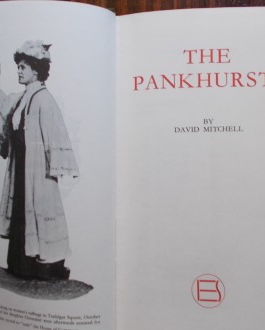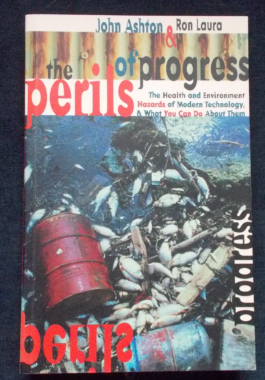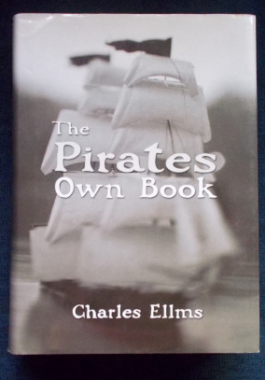- Sorry, this product is unavailable.
-
 During World War II, Dr. J. Robert Oppenheimer directed the building of the atom bomb; soon afterwards he became the U.S. government's top adviser on nuclear policy. Yet in December 1953 he was suspended as a security risk by President Eisenhower. The charges: close association with Communists and obstructing development on the hydrogen bomb. Was Oppenheimer unfit to be trusted by the country he had served with such distinction? Or was he a victim of Senator Joe McCarthy's infamous anti-communist witch-hunt and of the many enemies he had made in political, scientific and military circles? After a lengthy and detailed enquiry into Oppenheimer's past, the charges against him were upheld by the Atomic Energy Commission. But the verdict only intensified public misgivings about the secret hearing. The author, former Prime Minster of England John Major, made an exhaustive examination of all the sources and has produced a penetrating analysis of one of the most disturbing events in recent American history.
During World War II, Dr. J. Robert Oppenheimer directed the building of the atom bomb; soon afterwards he became the U.S. government's top adviser on nuclear policy. Yet in December 1953 he was suspended as a security risk by President Eisenhower. The charges: close association with Communists and obstructing development on the hydrogen bomb. Was Oppenheimer unfit to be trusted by the country he had served with such distinction? Or was he a victim of Senator Joe McCarthy's infamous anti-communist witch-hunt and of the many enemies he had made in political, scientific and military circles? After a lengthy and detailed enquiry into Oppenheimer's past, the charges against him were upheld by the Atomic Energy Commission. But the verdict only intensified public misgivings about the secret hearing. The author, former Prime Minster of England John Major, made an exhaustive examination of all the sources and has produced a penetrating analysis of one of the most disturbing events in recent American history. -
 The tale of the White Star Liner Oceanic which struck a remote reef of Shetland and sank in 1914, just after the outbreak of World War One. This 'Queen of the Seas' was more magnificently luxurious than her famous sister Titanic. It is remarkable that the disaster was scarcely heard of at the time and is now all but forgotten; but it was wartime; secrecy was paramount and the line had been taken over by the Royal Navy and had become the armed cruiser HMS Oceanic, yet still retaining its grand marble bathrooms, gilt carvings, gold-plated fittings and stained glass domes. The cause of the disaster is classic - there were two captains; one naval and the other merchant navy, although the naval officer was in supreme command. The ship was on patrol off the north coast of Scotland; the navigator was miles out in in his estimate of of its position on September 8 and when the mist cleared, instead of being well south and west of the isle of Foula, the ship was east of it and heading straight for the terrible Shaalds reef. After that, mistake piled on mistake - the bow struck and the tide pushed the ship further onto the reef; and the giantess was poised briefly before breaking up and sinking. A remarkable salvage operation of the Oceanic was achieved in 1974.
The tale of the White Star Liner Oceanic which struck a remote reef of Shetland and sank in 1914, just after the outbreak of World War One. This 'Queen of the Seas' was more magnificently luxurious than her famous sister Titanic. It is remarkable that the disaster was scarcely heard of at the time and is now all but forgotten; but it was wartime; secrecy was paramount and the line had been taken over by the Royal Navy and had become the armed cruiser HMS Oceanic, yet still retaining its grand marble bathrooms, gilt carvings, gold-plated fittings and stained glass domes. The cause of the disaster is classic - there were two captains; one naval and the other merchant navy, although the naval officer was in supreme command. The ship was on patrol off the north coast of Scotland; the navigator was miles out in in his estimate of of its position on September 8 and when the mist cleared, instead of being well south and west of the isle of Foula, the ship was east of it and heading straight for the terrible Shaalds reef. After that, mistake piled on mistake - the bow struck and the tide pushed the ship further onto the reef; and the giantess was poised briefly before breaking up and sinking. A remarkable salvage operation of the Oceanic was achieved in 1974. -
 For more than forty years, Frederick Forsyth has been writing extraordinary real-world novels of intrigue, from the groundbreaking The Day of the Jackal to the prescient The Kill List . Whether writing about the murky world of arms dealers, the shadowy Nazi underground movement, or the intricacies of worldwide drug cartels, every plot has been chillingly plausible because every detail has been minutely researched. But what most people don’t know is that some of his greatest stories of intrigue have been in his own life. He was the RAF’s youngest pilot at the age of nineteen, barely escaped the wrath of an arms dealer in Hamburg, got strafed by a MiG during the Nigerian civil war, landed during a bloody coup in Guinea-Bissau (and was accused of helping fund a 1973 coup in Equatorial Guinea). The Stasi arrested him, the Israelis feted him, the IRA threatened him, and a certain attractive Czech secret police agent—well, her actions were a bit more intimate. And that’s just for starters... Illustrated with black and white photographs.
For more than forty years, Frederick Forsyth has been writing extraordinary real-world novels of intrigue, from the groundbreaking The Day of the Jackal to the prescient The Kill List . Whether writing about the murky world of arms dealers, the shadowy Nazi underground movement, or the intricacies of worldwide drug cartels, every plot has been chillingly plausible because every detail has been minutely researched. But what most people don’t know is that some of his greatest stories of intrigue have been in his own life. He was the RAF’s youngest pilot at the age of nineteen, barely escaped the wrath of an arms dealer in Hamburg, got strafed by a MiG during the Nigerian civil war, landed during a bloody coup in Guinea-Bissau (and was accused of helping fund a 1973 coup in Equatorial Guinea). The Stasi arrested him, the Israelis feted him, the IRA threatened him, and a certain attractive Czech secret police agent—well, her actions were a bit more intimate. And that’s just for starters... Illustrated with black and white photographs. -
 Gerald Durrell's debut book is the chronicle of a six months collecting trip to the West African colony of British Cameroon - now Cameroon - that Durrell made with the highly regarded aviculturist and ornithologist John Yealland between December 1947 and August 1948. Their reasons for going on the trip were twofold: to collect and bring back alive some of the fascinating animals, birds, and reptiles that inhabit the region and secondly, for both men to realise a long cherished dream to see Africa. It's a combination of comic exaggeration and environmental accuracy, portrayed in Durrell's light, clever prose that successfully launched Durrell's career as a writer of both non-fiction and fiction, which in turn financed his work as a zookeeper and conservationist.
Gerald Durrell's debut book is the chronicle of a six months collecting trip to the West African colony of British Cameroon - now Cameroon - that Durrell made with the highly regarded aviculturist and ornithologist John Yealland between December 1947 and August 1948. Their reasons for going on the trip were twofold: to collect and bring back alive some of the fascinating animals, birds, and reptiles that inhabit the region and secondly, for both men to realise a long cherished dream to see Africa. It's a combination of comic exaggeration and environmental accuracy, portrayed in Durrell's light, clever prose that successfully launched Durrell's career as a writer of both non-fiction and fiction, which in turn financed his work as a zookeeper and conservationist. -

 Mrs Emmeline Pankhurst, with her daughters Christabel, Sylvia and Adela were the central figures of the Suffragette movement who fought for votes for women in the early years of the 20th century. Civil disobedience, direct action, mass meetings, hunger strikes and vandalism were all employed to shout the message of equality. A possible apocryphal story is that of a young suffragette who was distressed by the growing violence on behalf of the Cause, and who came to Mrs. Pankhurst crying, "What shall we do? What shall we do?" The reply? "Put your faith in God, my dear. She will help us."
Mrs Emmeline Pankhurst, with her daughters Christabel, Sylvia and Adela were the central figures of the Suffragette movement who fought for votes for women in the early years of the 20th century. Civil disobedience, direct action, mass meetings, hunger strikes and vandalism were all employed to shout the message of equality. A possible apocryphal story is that of a young suffragette who was distressed by the growing violence on behalf of the Cause, and who came to Mrs. Pankhurst crying, "What shall we do? What shall we do?" The reply? "Put your faith in God, my dear. She will help us." -
 What will happen to our own sense of identity if surgeons can transplant heads? If biologists can make heads bigger? If psychologists could put electric motors inside the head? This is a sharp assessment of contemporary scientists' projects for reshaping people and controlling their behaviour. Packard investigates the work of geneticists, behavioural psychologists, psycho-surgeons - and politicians, technologists and marketing professionals. Some of the projects are intriguing; some are disturbing - and some make the skin crawl...such as: devising ever-more sophisticated forms of surveillance; manufacturing living organs; stimulating and modifying the brain; programming behaviour; controlling people en masse; altering the natural process of birth, death and old age; hybridising man with animal or man with machine; manipulating genes.
What will happen to our own sense of identity if surgeons can transplant heads? If biologists can make heads bigger? If psychologists could put electric motors inside the head? This is a sharp assessment of contemporary scientists' projects for reshaping people and controlling their behaviour. Packard investigates the work of geneticists, behavioural psychologists, psycho-surgeons - and politicians, technologists and marketing professionals. Some of the projects are intriguing; some are disturbing - and some make the skin crawl...such as: devising ever-more sophisticated forms of surveillance; manufacturing living organs; stimulating and modifying the brain; programming behaviour; controlling people en masse; altering the natural process of birth, death and old age; hybridising man with animal or man with machine; manipulating genes. -

Comprehensive in coverage and meticulously researched, this book calls on the latest scientific research to challenge our society's largely unquestioning commitment to new technology. While modern technology has many benefits, the authors believe that Western society's reliance on the latest tech as a cure-all for our problems is seriously misplaced - in some cases, dangerously so. Health and environment issues include: The damaging effects on human health of certain microwaves, including those from mobile phones, mobile phone base stations and television transmission towers; the ongoing debate about the effects of human health of aluminium in food and other consumer products; the growing evidence that the trans-polyunsaturated acids formed in most margarines during manufacture may be worse for your health than butter; and the growing understanding that the amount of natural light entering the eyes can contribute significantly to the body's ability to fight disease. There is much which is disagreeable and sometimes distressing, but this book is not a downer. At the end of each chapter there's a positive 'What YOU can do' section.
-
 Originally published in 1837, here are the 'Authentic Narratives of the Most Celebrated Sea Robbers' - pirates! True stories of the diabolical desperadoes who plundered ships on the high seas and murdered their passengers and crews. The stories - based on contemporary newspaper accounts, trial proceedings and Admiralty records - describe in lurid detail the life, atrocities and bloody death of the infamous Black Beard as well as the cold-blooded exploits of Jean Lafitte, Robert Kidd, Edward Low, Thomas White, Anne Bonney, Mary Read and scores of other maritime marauders. For those interested in the true-life adventures of the ruthless men and women who sailed under the black flag so long ago. With illustrations reproduced from the original edition.
Originally published in 1837, here are the 'Authentic Narratives of the Most Celebrated Sea Robbers' - pirates! True stories of the diabolical desperadoes who plundered ships on the high seas and murdered their passengers and crews. The stories - based on contemporary newspaper accounts, trial proceedings and Admiralty records - describe in lurid detail the life, atrocities and bloody death of the infamous Black Beard as well as the cold-blooded exploits of Jean Lafitte, Robert Kidd, Edward Low, Thomas White, Anne Bonney, Mary Read and scores of other maritime marauders. For those interested in the true-life adventures of the ruthless men and women who sailed under the black flag so long ago. With illustrations reproduced from the original edition.




